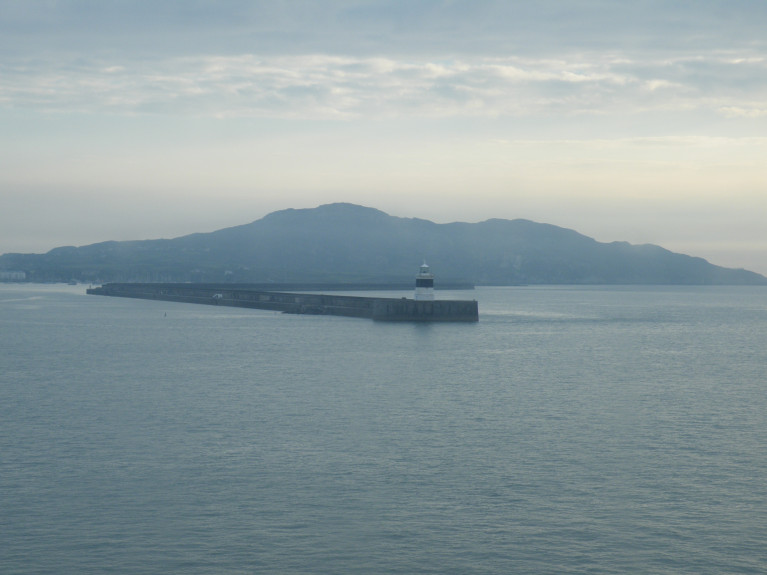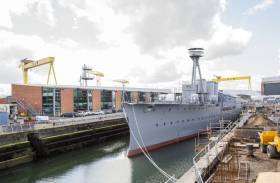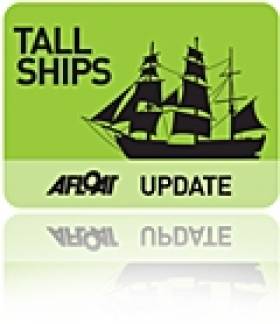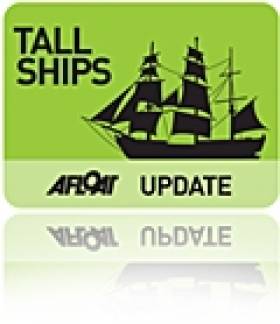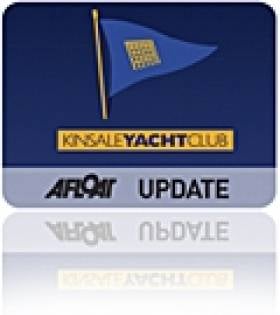Displaying items by tag: Refurbishment
Plans to refurbish the Port of Holyhead's Breakwater amid concerns it could fail within the next 15 years has led to a consultation launched.
Investigations of the structure have identified a need for a large scale refurbishment of the Breakwater to ensure that it can continue to receive about 70% of all ferry vehicle movement between Ireland and Wales and the North West.
Since its completion in 1873, the Breakwater has been subject to considerable wave action, which has led to the movement and erosion (as Afloat reported) of the rubble mound, that supports the structures wall.
Over the coming years it is anticipated that the level of the mound will become so low that the footing of the vertical walls will be at risk of being undermined.
"Investigations of the structure have predicted that the Breakwater could fail within the next 15 years meaning a permanent solution must be found," a Stena Line Ports spokesperson said.
More from North Wales Pioneer here.
#HMScaroline - An historic ship with a wartime past that is a modern day Belfast tourist attraction has had its future secured thanks to a major programme of innovative repairs, safety upgrades and improvements.
As the Belfast Telegraph writes, HMS Caroline, the only survivor of the First World War Battle of Jutland, is now nearly ship-shape and Bristol fashion again and ready to reopen to the public, who visited it in their thousands last year.
The ship underwent extensive repairs over the winter and engineers came up with an ingenious solution to the problem of how to make it even safer for visitors.
The National Museum of the Royal Navy said it was one of the most innovative engineering projects seen in Ireland, and it is nearing completion at Alexandra Dock in Belfast.
The ship was fully restored and opened to the public in May 2016 with £15,086,100 backing from the Heritage Lottery Fund and £4,518,000 support from Tourism NI.
But repairs were needed to the hull and they have been carried out by Harland and Wolff Heavy Industries.
At the same time a hugely-complex permanent mooring system to make the ship safe for the public and also to protect it from lateral movements as it floats on the rising and falling tides is now close to completion. For more on the return of the floating tourist attraction, click here.
IWDG Secures 75% Funding for Celtic Mist Refit
#TALL SHIPS - The Irish Whale and Dolphin Group (IWDG) has secured three-quarters of the funding it required to refit its research vessel Celtic Mist.
According to The Irish Times, the Clare Local Development Company has approved the allocation of a €48,000 grant towards the refurbishment of the ketch.
The work will be carried out by Cathal Blunnie and several sub-contractors, and involves stripping down the main cabin and removing the bath and shower to increase space for crew berths.
While the ship's clock will be retained, the ship’s wheel in the main cabin will be removed and presented to the Haughey family as a gesture of appreciation.
As previously reported on Afloat.ie, the 52-foot yacht - which was gifted by the Haughey family to the IWDG to assist in its marine wildlife conservation work - entered dry dock last November in preparation for the refit work, after relocating to its new berth at Kilrush, Co Clare in July.
This followed its last jaunt at sea in its former guise, completing a leg of the Tall Ships Races from Waterford to Greenock in Scotland.
The cost of refurbishing the yacht for research and training purposes is expected to top €60,000, with an annual running cost of some €20,000, for which the IWDG is seeking ongoing financial assistance.
The group aims to get the Celtic Mist back at sea before the summer.
IWDG Hopes Day Trips Will Keep Celtic Mist Afloat
#TALL SHIPS - Not only has the Celtic Mist finally been lifted into dry dock for refurbishing this week, but the Irish Independent reports that day trips will be offered on the yacht when it returns to the water next summer.
As previously reported on Afloat.ie, the one-time personal yacht of the late Taoiseach Charles Haughey is being repurposed as a research vessel by new owners the Irish Whale and Dolphin Group (IWDG) at a cost of some €60,000.
In an effort to help fund the 52-foot ketch's refit bill and its estimated €20,000-per-year running costs, members of the public who pay €50 for a 'Celtic Mist Certificate' will be entitled to a day's sailing on board the newly retitled RV Celtic Mist.
IWDG co-ordinator Dr Simon Berrow said: "We've a lot of work to carry out on the yacht before we can take it out for research," IWDG co-ordinator Simon Berrow told the Independent. "We are confident that we can raise the money to run it."
Here's a link to a TV3 clip
Celtic Mist Finally in Dry Dock for Refitting
#TALL SHIPS - RTÉ News reports that the Celtic Mist is finally in dry dock for refurbishment to begin its new life as a maritime research vessel.
As previously reported on Afloat.ie, the 52-foot yacht - which was gifted by the Haughey family to the Irish Whale and Dolphin Group (IWDG) to assist in its marine wildlife conservation work - relocated to its new berth at Kilrush, Co Clare in July.
This followed its last jaunt at sea earlier this year, completing a leg of the Tall Ships Races from Waterford to Greenock.
The cost of refurbishing the yacht for research and training purposes is expected to top €60,000, with an annual running cost of some €20,000, for which the IWDG is seeking ongoing financial assistance.
The group aims to get the Celtic Mist back at sea before next summer.
Notice of Angling Reservoir Closures in Northern Ireland
Northern Ireland Water has announced that some of its reservoirs will be closed to angling temporarily from next January to facilitate refurbishment work.
The water levels on the reservoirs in the DCAL Public Angling Estate work be lowered on a phased basis from next year by Northern Ireland Water.
Ahead of that work, fisheries staff will be reducing fish stocks in the interest of welfare.
The fisheries will be closed from the start date of the works until the refurbishment work is completed, water levels restored and stocking re-commenced stocking, which could take up to a year.
Anglers will be notified of the details of the temporary closures of Public Angling Estate waters on the Department’s website
Full details will be available online for anglers at www.nidirect.gov.uk/angling.
Closure dates (subject to change) are listed below:
Portavoe - January 2012
Copeland - January 2012
Lough Mourne - April 2012
Lower South Woodburn - November 2012
Middle South Woodburn - March 2013
Upper South Woodburn - August 2013
North Woodburn - January 2014
KYC Meets on Clubhouse Situation
Kinsale Yacht Club (KYC) held an information meeting last Tuesday to discuss the situation of its aging clubhouse ahead of a planned EGM later this month.
Structural problems were previously discussed at a club meeting last November, at which a number of options were presented.
These included undertaking a complete refurbishment of the building, and the option of moving the club to a new green field site on the other side of the River Bandon.
Tuesday's meeting at KYC saw presentations from an engineer, an architect, a quantity surveyor and an expert financial advisor based on these options, in order to evaluate the best choice for the club going forward - namely the first option of refurbishing.
The club committee will propose a motion to adopt its recommendation to move ahead with refurbishment plans at the EGM, scheduled for Tuesday 24 May at 8pm.



























